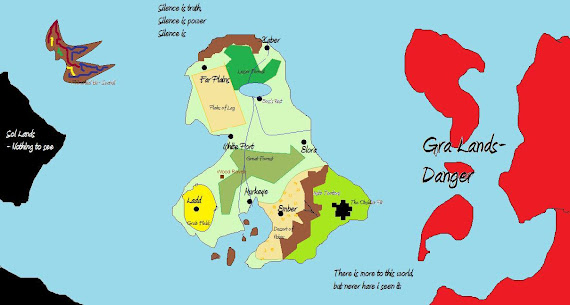
This article is a write-up on a character class variant that is covered in Tome of Battle: The Book of Nine Swords but in fairly ambiguous language. The following is how I'll be handling the rules for it, should one of you powergaming freaks decide to play it.
Arcane Swordsage
All Class Features are identical to those presented for the normal Swordsage on Page 16 of Tome of Battle: The Book of Nines Swords except the following:
Hit Die: d6 (Note: This class is powerful, and as a result breaks 3.75's normal rule of 3/4 base attack always getting at least a d8 hit die)
Weapon and Armor Proficiency: An Arcane Swordsage is proficient with all simple weapons and all martial melee weapons (but not martial ranged weapons, although they are proficient with weapons that can be used as thrown weapons). An Arcane Swordsage is not proficient with any form of armor or shield.
AC Bonus: An Arcane Swordsage adds his Wisdom modifier to his AC as long he is not wearing medium or heavy armor and is not carrying a shield. This bonus applies even against touch attacks and when the Arcane Swordsage is flat-footed, but is lost when the Arcane Swordsage is immobilized or helpless.
Maneuvers and Spells: Maneuvers are learned as normal and can be exchanged for new maneuvers as written. However, in place of a maneuver, a Swordsage can learn a single Arcane spell chosen from the Sorceror/Wizard or Wu Jen spell list. The chosen spell may only be of the schools of Abjuration, Evocation, or Transmutation and is learned in place of a maneuver of equivalent level.
An Arcane Swordsage must have a Wisdom score of at least 10 plus the spell level to learn a spell. Save DCs are determined using the Arcane Swordsage's Wisdom modifier. Since Arcane Swordsages cast their spells as maneuvers instead of using spell slots, Arcane Swordsages do not gain bonus spells per day. All Arcane Swordsage spells incur normal arcane spell failure chance.
For the purpose of feats, class feature, etc., all spells known by an Arcane Swordsage are considered to be known spells. However, an Arcane Swordsage does not have a class spell list, and thus can only use wands or other items if they have a spell he personally knows (unless he has ranks in Use Magic Device). An Arcane Swordsage prepares and casts his spells as if they were maneuvers, with the spells occupying slots as readied maneuvers. Note that an Arcane Swordsage can only use Reserve Feats (or any other effect requiring a spell being "available to cast") if he has a spell of the corresponding type readied--simply knowing the spell will not suffice (although, if time allows, the Arcane Swordsage can simply change his readied maneuvers to regain access to the effect). In addition, a single spell cannot be readied more than once--it must be refreshed as a maneuver if the Arcane Swordsage wants to use it again.
An Arcane Swordsage's caster level is equal to his Arcane Swordsage level. Unlike his Initiator level, his caster level does not increase by 1/2 when taking levels of other classes (nor will multiclassing with other martial adepts increase his caster level). Note that because maneuvers are class features, not spells, only Prestige Classes that grant "+1 Level of Class Features" will increase his spells/maneuvers known and caster level. The maximum level of spell he can learn at any given level is determined by his Arcane Swordsage level:
Spell Level/Class Level
1/1-2
2/3-4
3/5-6
4/7-8
5/9-10
For the purposes of gaining/losing maneuvers and spells, consider all known spells to be martial maneuvers. An Arcane Swordsage can use the Martial Maneuver feat to choose another spell if he so desires.
Spells are used and refreshed in the same manner that maneuvers are. That is, they can be refreshed with 5 minutes of downtime, swapped out between known and readied with 5 minutes of meditation. Using the Adaptive Style feat will let an Arcane Swordsage swap out and refresh all his spells and maneuvers as a full-round action, or he can quickly meditate to refresh a single maneuver or spell as a full-round action.
Due to the fact that an Arcane Swordsage does not have spell slots, he cannot use metamagic feats that increase or decrease a spell's level. He can, however, make use of metamagic feats that do not (for example, Sudden Empower from Complete Arcane).
For the purposes of qualifying for maneuvers and stances, spells of the following schools count as maneuvers of the corrosponding Schools of the Sublime way:
Abjuration: Setting Sun, Shadow Hand
Evocation: Desert Wind, Tiger Claw
Transmutation: Diamond Mind, Stone Dragon
Feats that affect maneuvers of the Sublime school do not effect spells of the corresponding school of magic.
And that about covers it. Use it wisely.
